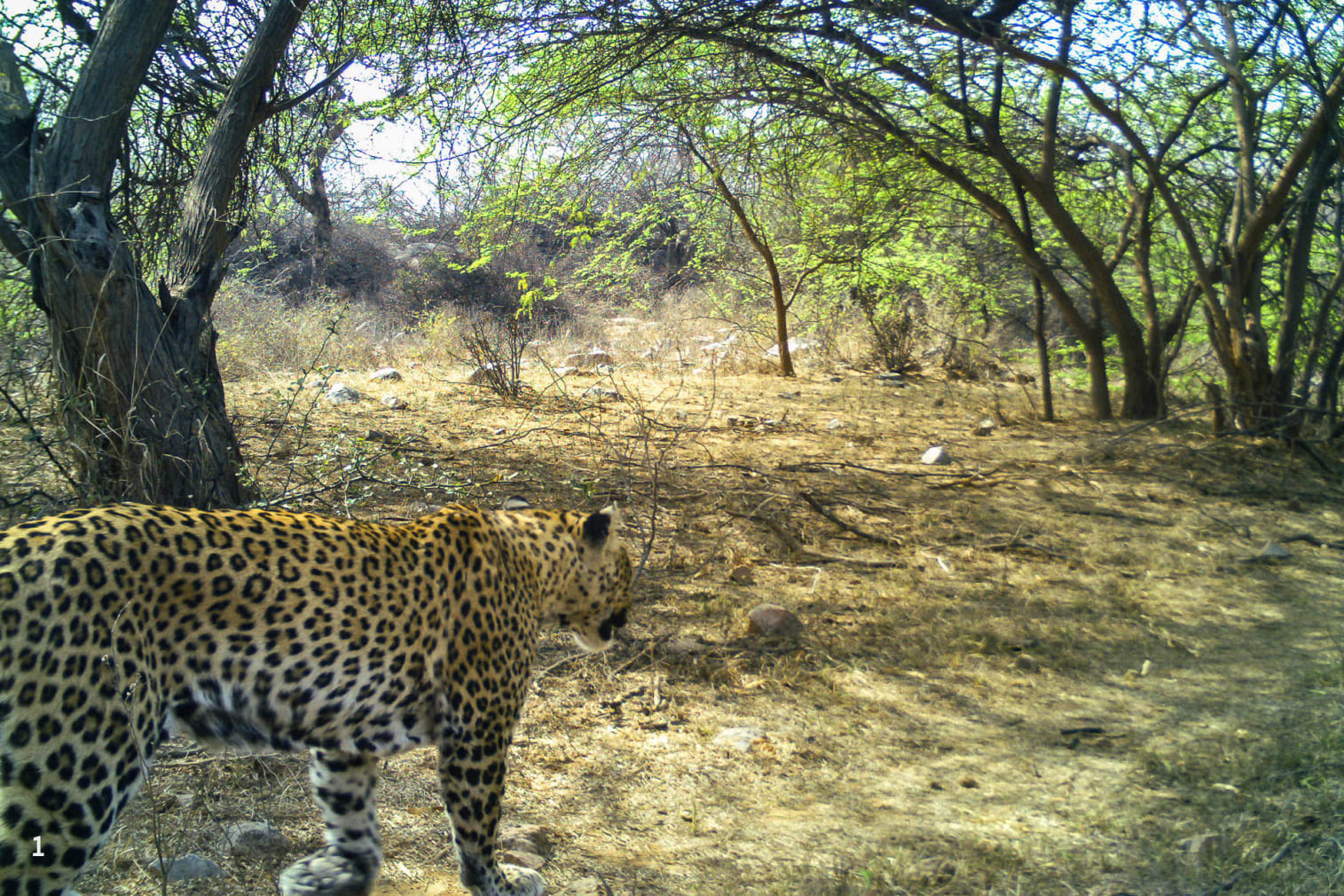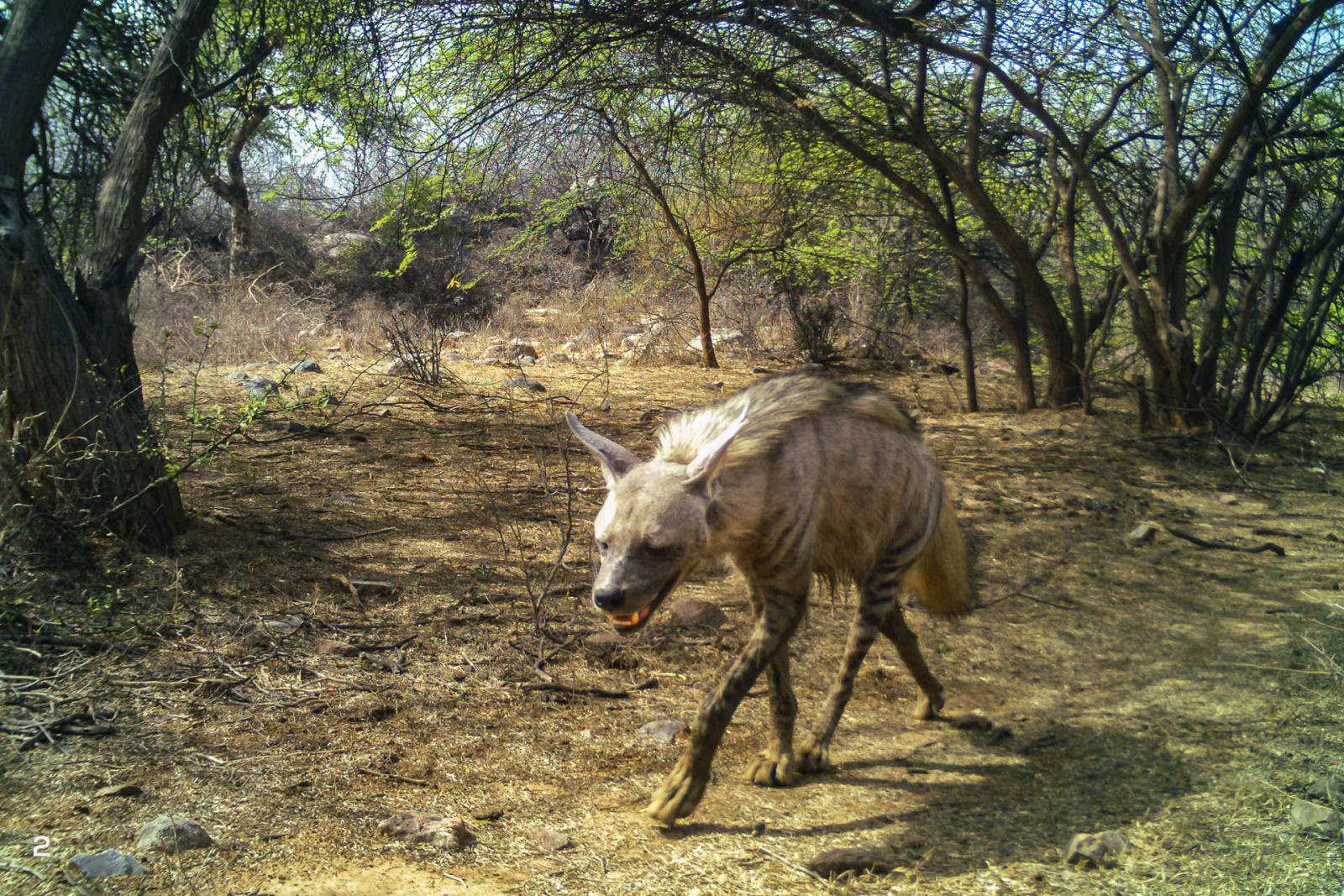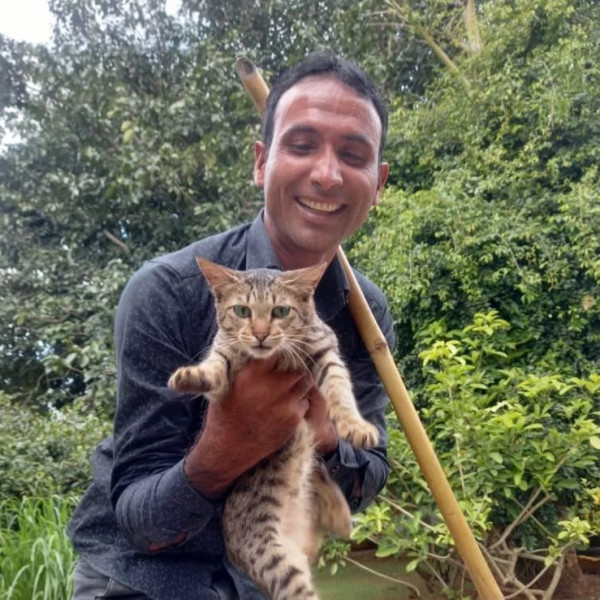 Listen to this article
•
15:34 min
Listen to this article
•
15:34 min
In the rugged terrain of the Aravalli Hills, stories of coexistence between humans and leopards unfold in surprising ways. These are often not just tales of conflict but of understanding, resilience, and an unspoken harmony that defies the odds.
One winter morning, we sat with Birsingh, a 65-year-old retired army captain, at the Johdi Wala Temple atop a hill in Damdama village, Haryana. Birsingh belongs to the Gurjar community, known for its centuries-old tradition of animal husbandry. Sharing the landscape with the jinawar — the leopard — has been an intrinsic part of their lives and culture.
Living With Jinawar
Nitesh broke the silence: “Uncle, does the jinawar come here too?” Birsingh replied without hesitation, “It comes here a lot.”
When asked if the leopards caused any problems, his reply was unexpected: “What problem? We live with jinawar.” These words spoke volumes about his belief in the villagers’ acceptance of the predator as a part of their lives.
Birsingh recounted a childhood memory of a leopard sneaking into their goat shed one night and waking their dog. Startled awake, young Birsingh uttered a loud cry, scaring the animal away but waking the entire village. “The jinawar never attacks women,” he added, citing stories from Damdama and even from his army postings in Kashmir. His belief, shared by others in the Gurjar community, may lack scientific evidence but is deeply rooted in their faith.
Tales of Survival and Respect
Birsingh shared a 60-year-old tale of Baba Fundan, a villager who once fought a leopard to save his goat. The battle lasted hours until Baba Fundan, exhausted, surrendered, saying, “Attacking the defeated is no sign of bravery”. The leopard, seemingly moved by his words, released him and disappeared into the forest.
Cover Photo: Koushik Ranjan Das, CC BY-SA 4.0
https://commons.wikimedia.org/wiki/File:JAWAI_BERA_LEOPARD_KING.jpg
Contrast this with the tragic fate of Umrao, a famous hunter from Bhondsi village (who lived around the same time as Baba Fundan). Attempting to hunt a leopard, he baited it with a goat sat on a platform on a tree. Before he could shoot the leopard, it sensed danger, leapt onto the platform, killing Umrao. Whether fact or folklore, these stories illustrate a profound respect for the predator. Birsingh said, “We’ve fought the animal but never killed it. It eats our livestock but has never harmed us. That’s our relationship with jinawar.”
The Cost of Coexistence
Mangar, another village in this landscape, nestled in the heart of the Aravalli Hills, is surrounded by dense forests. This setting makes it a hotspot for wildlife activity, especially leopards. The residents, predominantly from the Gurjar community, have lived alongside these majestic predators for centuries. Their lives reflect resilience, shaped by the challenges and rewards of coexisting with the wild.
One such resident is 60-year-old Jeetram, a seasoned cattle herder who owns 30 cows and has lost 17 calves — aged 0-3 years — to leopards. The most recent loss had occurred the night before our visit when a leopard descended from the nearby mountains and stealthily killed one of his healthiest calves. In the morning, we visited Jeetram’s revara (animal enclosure) to document the incident and assist him in filing a compensation claim.
It was a crisp winter day in February, and the sunlight brought some warmth as we sat outside his enclosure. While I worked on drafting the compensation petition, Nitesh engaged Jeetram in conversation about leopards and their impact on the lives of pastoralists.
A Daily Visitor
Jeetram recounted the events of the night with remarkable composure. “He comes here often,” he said, gesturing toward a large stone near the enclosure. “He sits there quietly, watching. At night, when we shine a torch, his eyes reflect the light back — that’s how we know he’s there.”
When Nitesh asked Jeetram about the frequency of such visits, Jeetram began to calculate. “In the last three years, he has killed 16 cows; last night’s calf makes it 17,” he said with a mix of humour and resignation. He added, “And he always kills the jengda — the healthiest calves. Even if someone offered me one lakh rupees for the last two calves he took, I wouldn’t have sold them. But he’s so strong, he just takes them without asking.
The close cohabitation of humans and leopards leads to frequent encounters, shaping perceptions towards the behaviours of predators. These everyday interactions offer insight into how each interprets the other. Jeetram’s response, though tinged with sorrow, carried acceptance and humour, reflecting a deep, generational understanding of the predator and its instincts.
These findings underscore that both ecological understanding and cultural values influence human-leopard coexistence. In Himachal Pradesh, Dhee et al. (2019) found that when people recognise leopards as naturally shy animals that avoid humans and only attack when provoked, it fosters a sense of security and makes sharing space more acceptable. Similarly, in their study in Jalpaiguri, West Bengal, Kshettry et al. (2021) emphasise the role of religious sentiments in shaping positive attitudes toward large-bodied wildlife. Together, these studies suggest that conservation planning should integrate scientific knowledge of animal behaviour with an awareness of local cultural and spiritual frameworks to support peaceful coexistence.
Loss with a Purpose
Feeling empathetic, we asked him, “What do you think should be done about the leopard?” His answer was unexpectedly profound.
“Look, this animal is very intelligent, hunts very strategically, and is the pride of the forest,” Jeetram said. “It’s sad when we suffer a loss, but there is also a benefit. Because of the leopard, we live more carefully with our animals. We stay close to them and guide them to areas with better fodder. They come back after grazing well in the forest, which means we have to buy less fodder.”
He paused, looking toward the hills, before adding, “We have a forest because of it. I like that he should live in the forest”. This statement encapsulates the delicate balance of coexistence. Despite the economic and emotional toll of losing his animals, Jeetram recognised the leopard’s integral role in the ecosystem.
Lessons in Conservation
In the Aravalli landscape, these stories of coexistence reveal an underlying understanding of nature’s balance. The local people’s belief in the intelligence and purpose of leopards and their resilience in the face of loss fosters an environment where conservation is not just a policy but a way of life. In our study of 146 individuals from the region — including shepherds, farmers, women collecting fuelwood, and people with urban-based jobs — 108 respondents reported no issues with leopards. Only 38 expressed concerns, mainly due to the fear that, in the future, if natural prey declines, leopards might begin entering human settlements in search of food. Interestingly, 43 people, despite experiencing losses, strongly supported the continued presence of leopards in the landscape. Notably, most of the 38 concerned individuals had no direct connection to the forest, whereas most of the 43 who advocated for leopards were closely connected to forest-based livelihoods.
It’s human nature to anthropomorphise animals (attributing them with human behaviours and traits drawn from observation, faith, or imagination). While often lacking scientific grounding, these beliefs play a significant role in shaping attitudes towards conservation.
Who Are the True Conservationists?
On leaving the village, one question lingered in our minds — who are the true conservationists? Is it those who design policies from a distance or the local communities who, despite their daily hardships, continue to share space with leopards and other wildlife? These are the people who, while facing real risks to their livelihoods, nurture a quiet goodwill toward the very animals that challenge their existence. Their everyday choices, patience, and understanding reflect a deep-rooted conservation ethic that is lived, not just preached.
Perhaps the answer lies in the harmony we witnessed. For the local communities, the leopard is not merely a predator; it is a neighbour, a teacher, and a symbol of the wild that defines their land. In their coexistence lies a lesson for all of us and a reminder that true conservation begins with respect, resilience, and the stories that connect us to the natural world. However, due to the changing scenario and the impact of urbanisation, the equations have started changing here too.












